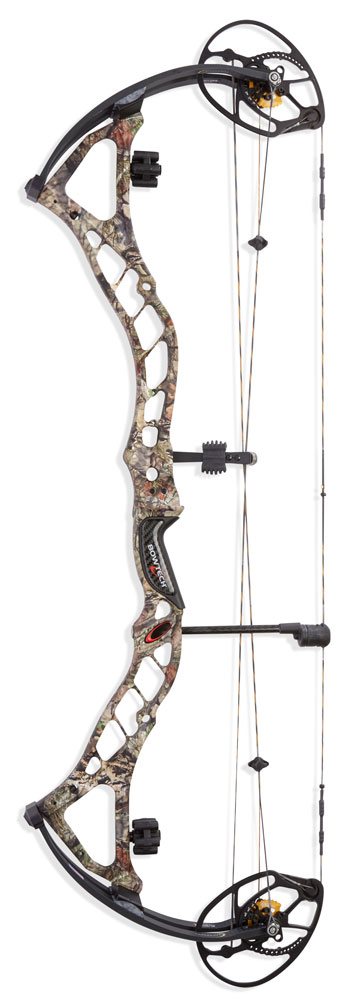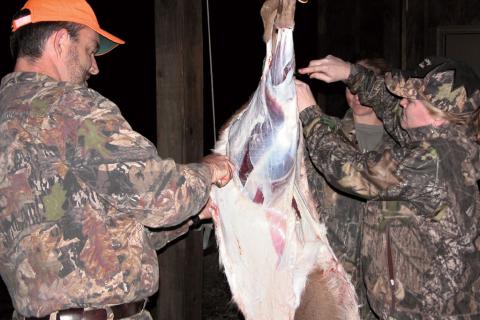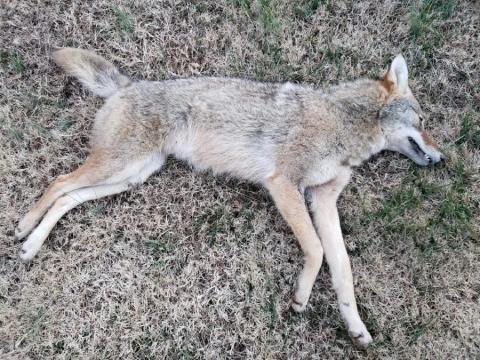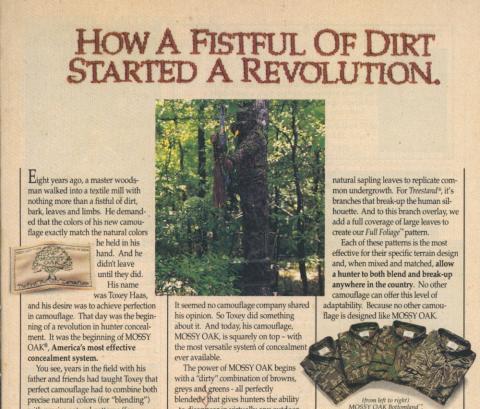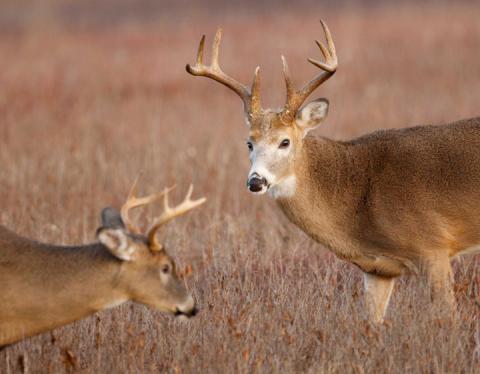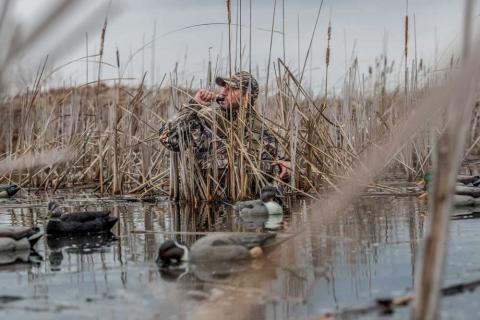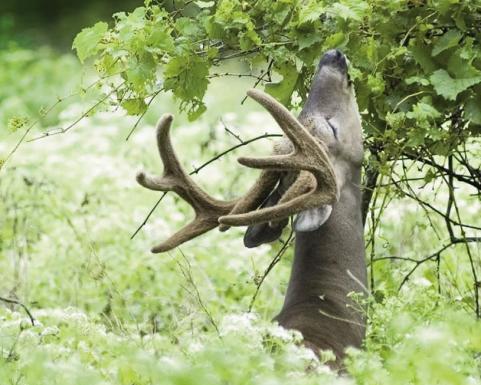Louie Payne Says “Don’t Be Stupid This Hunting Season”
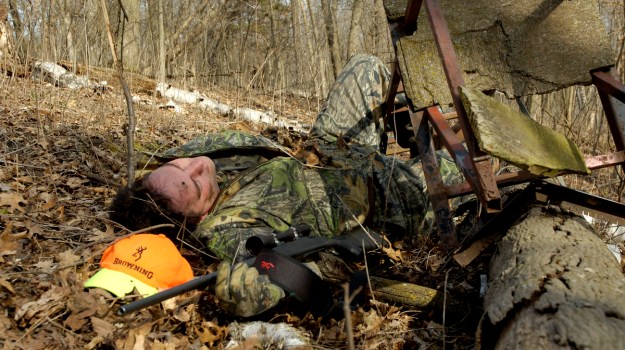
Editor’s Note: This is the most-important article you'll read this hunting season that can save your life, keep you from losing 1 week to 6 months of work, save you thousands of dollars and prevent pain and suffering for many years. The longer you’ve hunted from a tree stand, the more likely that you’ll fall. We all think of tree stand accidents happening during hunting season, but this week we’ll look at three people who work with and shoot video for the Mossy Oak Pros Mark and Terry Drury of Drury Outdoors, who have fallen before the season. Part of the reason they fell was they believed they were bullet-proof from tree stand accidents. Louie Payne from Hodgenville, Kentucky, never believed he'd be the victim of a tree stand fall.
On October 15, 2014, prior to deer season, I was getting trail-camera pictures of a nice 10-point buck. I had some stands set-up in the area where I was seeing this buck, but I needed to move some tree stands closer to the trail the buck was using to get a bow shot at this 10-pointer. A young fellow who works with me, Joey Summit, went with me to move the stands.
After taking one of my tree stands down, I searched for the perfect tree to hang this stand but then decided not to hang it. Instead, I counted on my trail cameras to give me more and better information of the area where I needed to hang the stand to get a better bow shot on this 10-pointer. As I was carrying my tree stand out of the woods, we came to a field edge, andI saw scrapes all along the edge of that field. I told Joey, “I can’t leave this spot without hanging a stand.” So, I chose a tree.
I had 25-feet of stick ladders and two lock-on stands. The entire time I’ve used tree sticks I’ve always strapped the bottom stick to the base of the tree. Then I go up and attach the next set of steps to the tree. When I reach the top of my steps, I hook my climbing belt strap around the tree to enable me to safely pull my fixed-position stand up and strap it to the tree. When I reach the very top section of my stick steps, I’ll tighten the top strap. On this day, I said to myself, “I better tighten this top strap up a little tighter, because this is the step I’ll use to transition from my climbing ladder to my stand.” So, I wrapped the strap around my hand and pulled back really hard. Then the strap broke.
Although I was wearing a safety harness, when I was putting my ladder up, I didn’t have it attached to the tree. All my momentum was going backwards. As I fell, I grabbed one of the climbing steps. The step broke. I hit the ground and was knocked unconscious. When I woke up, Joey was standing over me saying “Don’t move. Don’t move. You fell.” Joey already had called 911 on his cell phone. Although I told Joey, “There's no way I could have fallen,” the worst pain I'd ever felt in my life hit me and then vanished. I reasoned with myself that I couldn’t have fallen because I'd put up tree steps a thousand times. I heard sirens in the distance and felt that horrible pain come back. Joey stayed on the phone with the 911 operator. When the ambulance reached the closest dirt road, Joey told me not to move, left me and went to meet the paramedics who returned with Joey on the Ranger with a stretcher. They put me on the stretcher, took me out of the woods on the Ranger and put me in the ambulance. At the hospital, I learned that my back was broken in two places, I’d broken four ribs, and I was leaking spinal fluid. I had emergency surgery immediately.
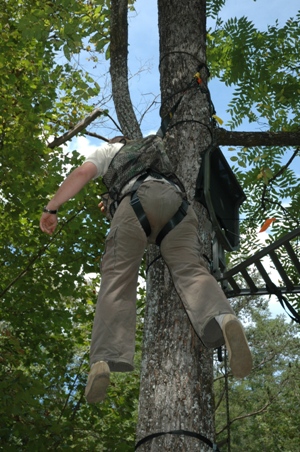 I was in the University of Louisville Hospital for about a week and then was moved to Frazier Rehabilitation Institute for 3 days. But when the therapist tried to sit me up, I had a lot of pain and felt like the room was spinning. When I stood up the pain was unbearable. The medical staff pulled my shirt up, looked at the incision and determined I was losing spinal fluid again. Immediately, I was sent to Norton Hospital where a team of spinal surgeons opened my back up again and stopped the spinal fluid from leaking. I was in that hospital for another week. I returned to Frazier Rehab for a month, and then for 3 months, I returned to Frazier Rehab every day for physical therapy.
I was in the University of Louisville Hospital for about a week and then was moved to Frazier Rehabilitation Institute for 3 days. But when the therapist tried to sit me up, I had a lot of pain and felt like the room was spinning. When I stood up the pain was unbearable. The medical staff pulled my shirt up, looked at the incision and determined I was losing spinal fluid again. Immediately, I was sent to Norton Hospital where a team of spinal surgeons opened my back up again and stopped the spinal fluid from leaking. I was in that hospital for another week. I returned to Frazier Rehab for a month, and then for 3 months, I returned to Frazier Rehab every day for physical therapy.
I was paralyzed from the waist down after the first surgery. My wife and daughter were told I only had a .5 percent chance of ever walking again. I had to catheterize myself every time I had to go to the bathroom - and that continues today. Finally, I was able to walk on flat ground. Today when I go into the woods, I have to use a walking stick. The left side of my body is still paralyzed from my waist down, but I have some feeling above my knee on the right side of my body. When I walk now, I can’t feel my left leg, or what’s under my left foot when I put it down. Before I put my left foot down, I have to visually look at where I’m about to put my left foot.
From this accident, I learned:
- Don’t be an idiot;
- Never move stands without having someone with you;
- Make sure from the time you leave the ground until you're back on the ground that you’re wearing your safety harness;
- Be certain you have your safety harness attached around the tree, and that it stays attached to the tree the entire time you're putting up tree steps, tree ladders or any other device you use to climb into a tree.
If I’d had my safety harness attached to the tree when I fell, I could’ve avoided all this pain, suffering, expense and lost time from work. At the most, I wouldn’t have had to spend more than 2 minutes putting that strap on my harness and around the tree before I started to climb. But because I always had put up steps without placing putting my safety harness strap around the tree, I felt I was bullet proof. However, I wasn’t. I learned that a safety harness like my Muddy safety harness wouldn’t work if I didn’t put the strap from the harness around the tree anytime I was climbing or sitting in my tree stand.
The good news is that I still can go hunting. But now, instead of hunting from a tree stand, my filming partner, Lonnie Lockard, and I bowhunt from a Muddy Bale (shaped like a hay bale) ground blind. We film for Drury Outdoors, owned by Mark and Terry Drury. If a ground blind is set up and brushed in properly, we’ve learned that it can be just as effective and oftentimes more effective than a tree stand at producing deer.
If I ever get the feeling in my legs back, I hope to one day hunt from a tree stand again. I've hunted from a tree stand all my bowhunting life. But due to the accident, I've also developed plenty of confidence in hunting from a ground blind. The last six or seven times I’ve hunted from a ground blind, I could have shot a deer with my bow. We also use the Ozonics machine every time we hunt, and so far we've never had a deer smell us in the ground blind.
From my experience I’m telling you - please don’t go up a tree – don’t leave the ground – without having your safety harness wrapped around the tree. You don’t have to go through what I have, if you'll just remember that one piece of advice.
To learn more about hunting deer, check out John E. Phillips’ new eBook and print book, “Bowhunting Deer: Mossy Oak Pros Know Bucks and Bows.” You also can download a free Kindle app that enables you to read the book on your iPad, computer or Smartphone.
For information on making jerky from your deer to provide a protein-rich snack, you can download a free book from http://johninthewild.com/free-books.
Tomorrow: Blair Goins Knew He’d Messed Up















